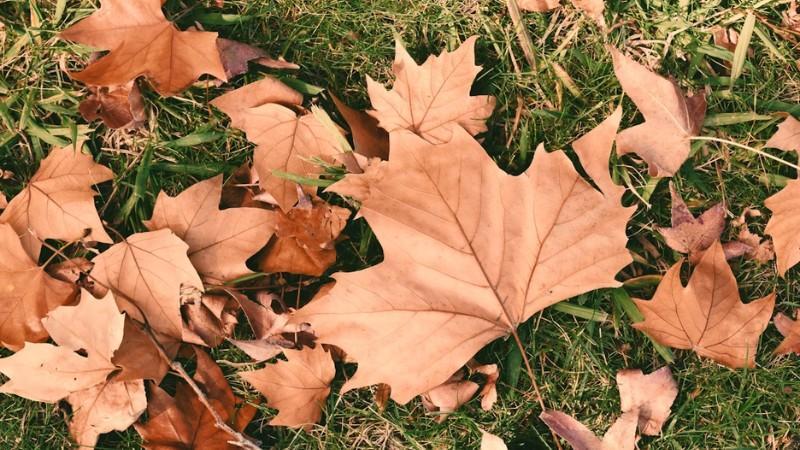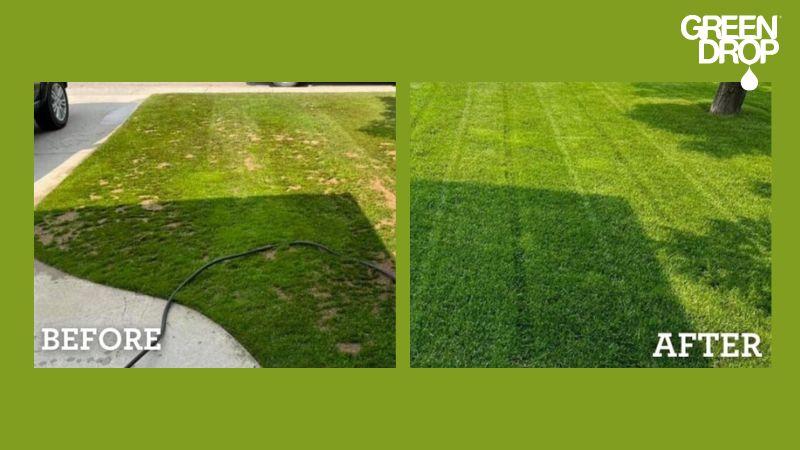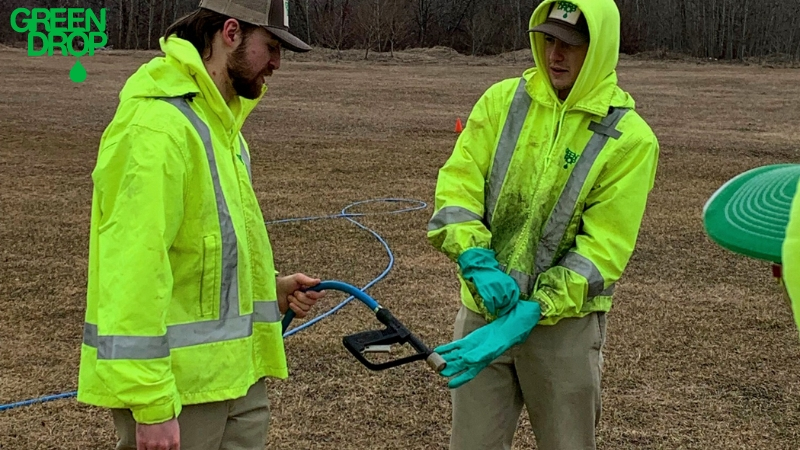The Ultimate Fall Fertilizer Guide: Feed Your Lawn Before the Freeze
Reading time: 6 - minutesWhile it’s during the fall that growth above the surface slows down, you may be surprised to know that your lawn is still busy toiling away.
It’s roots continue to grow actively; it’s storing energy and nutrients for that much-anticipated temperature drop.

So what should be on your fall ‘to-do list’ for your lawn?
It should be about giving your lawn the nutrients to survive the cold and keep it resilient so that it comes back strong in spring.
That’s where fall fertilization comes in.
This guide covers just what you want to know: the best times to fertilize, how to apply them, and what to expect when the snow melts.
Why Fall Fertilizing Works (Understanding Root Biology)
When days get shorter and nights cool off, your turf shifts gears. Instead of pumping out new blades, it diverts energy below ground into roots and crown tissue. Fertilizing during this transition gives the turf fuel for underground storage.
In Calgary and Edmonton, fall fertilization is especially important to buffer against sudden chinooks and freeze–thaw cycles.
Your lawn is basically packing away a lunch for later. Nutrients like nitrogen and potassium are tucked away, allowing grass to survive months under snow and come back strong in spring.
Homeowners who fertilize in the fall typically notice:
- Less winter injury. Stronger roots handle freeze-thaw cycles better.
- Earlier spring green-up. Stored reserves power quicker colour once temperatures rise.
- Thicker, denser turf. Which means fewer spring weeds taking advantage of bare patches.
When to Fertilize for Best Results
The biggest mistake you can make is to treat fall fertilization as a one-and-done event. The best approach is actually a two-step plan.
Window A: Early Fall Feed
When soil is still warm but days are cooler (usually late September/early October here), grass is in active recovery mode. It’s repairing stress from summer drought, foot traffic, and heat. A balanced fertilizer with slow-release nitrogen helps roots push deeper and regain strength.
Window B: Late Fall “Winterizer”
Roughly four to six weeks later, before the ground freezes, it’s time for a second application. This one is often called a winterizer, and it emphasizes potassium with a modest amount of nitrogen. The potassium strengthens cell walls, improves disease tolerance, and boosts water regulation.
Picking the Right Fertilizer: Why It Isn’t “One-Size-Fits-All”
Every lawn is different—shady vs. sunny, thin vs. dense, stressed vs. healthy. Fertilization in fall is less about picking a bag and more about giving your lawn what it needs based on its condition. For example…
- You have thin or patchy lawns: Here, fertilizer helps new seed establish and blend in.
- For drought-stressed lawns: Nutrients kickstart recovery, but water management is just as critical.
- For somewhat healthy lawns: A fall feed locks in that strength so it carries through winter.
- For weed-heavy lawns: Fertilizer thickens turf, but may need to be paired with weed control for best results.
This approach reframes the conversation: fertilizer isn’t just a product, it’s part of a bigger lawn strategy.
Choosing the right bag of fertilizer can feel overwhelming, but with Green Drop, you don’t have to guess. We combine professional-grade products like our exclusive SoilBooster™ fertilizer with proven application techniques to give your lawn exactly what it needs before winter sets in.
Here’s what you get:
- SoilBooster™ advantage. Our custom fertilizer is designed to improve soil health while delivering the nutrients your grass needs for stronger roots and resilience through cold snaps.
- Even professional coverage: Our team uses calibrated equipment and cross-hatch application methods, so every inch of your lawn gets the right amount of product.
- Paired services for deeper results: When combined with aeration or overseeding, SoilBooster™ fertilizer penetrates deeper and helps new growth establish faster.
How to Apply Fertilizer in Fall (Step-by-Step Guide)
A systematic approach prevents waste and ensures your lawn gets the full benefit.
- Prep the lawn. Mow (but don’t scalp), rake debris, and if you’re also doing soil work, aerate before you fertilize.
- Load your spreader. Calibrate according to the bag’s directions. Over-fertilizing can burn grass, and under-fertilizing wastes effort.
- Apply evenly. Use a crosshatch pattern, i.e., half north/south, half east/west. Edge first to avoid spill onto sidewalks or driveways.
- Water lightly if required. Some fertilizers need to be watered in. If so, run sprinklers just long enough to wash granules into the soil. Morning dew often helps too.
- Aftercare. Maintain a mowing height of 3 inches. Keep mower blades sharp to avoid frayed tips. Avoid heavy traffic on recently treated or overseeded areas.
- Clean up. Sweep any stray fertilizer off hard surfaces to prevent runoff into storm drains. Store leftover product sealed and dry.
What to Expect After Fall Fertilizing

Fertilizers are a magic wand, and you won’t see results overnight. Here’s what you can expect:
- Week 1–2: Grass holds colour more evenly. It looks steadier, not suddenly lush.
- Week 3–6: Roots push deeper. If you overseeded, seedlings knit in during this time.
- Winter: Stored minerals keep crowns and roots resilient through freeze-thaw cycles, snow load, and winter winds.
- Early spring: This is the big reveal. Fertilized lawns green up faster, grow thicker, and show fewer bare patches than untreated yards.
Results also depend on the condition of your lawn, for instance, if your lawn is:
- Thin from summer stress: You’ll see some lift this fall, with a stronger bounce in spring.
- Largely bare patches: Uniformity comes mainly in spring, especially if paired with overseeding.
- Weed-heavy: Fertilizing improves turf density, but weeds may still need attention.
- Drought-stressed: Fertilizer helps, but consistent moisture is key.
- Insect-damaged: Fertilizer aids recovery once pests are addressed, with spring as the turning point.
Common Fall Fertilizer Mistakes to Avoid
A few missteps can undo the benefits of a good fall feeding. Watch out for these:
- Fertilizing right before a heavy downpour leads to runoff, so you’re essentially wasting product.
- Choosing high, fast-acting nitrogen means surge growth that winter can kill.
- Fertilizing frozen or waterlogged soil stops roots from absorbing nutrients properly.
- Forgetting to calibrate your spreader results in stripes, streaks, and uneven growth.
- Leaving granules on driveways or sidewalks is wasteful and harmful to waterways.
- Bagging clippings after overseeding, since clippings actually help hold moisture and release gentle nutrients.
Now…For The Main Question: DIY or Green Drop Fertilization?
DIY Fertilizer | Green Drop Fertilizer Service | |
Product | Off-the-shelf bag, generic blends | SoilBooster™ custom fertilizer, pro-grade |
Application | Hand spreader, risk of stripes/uneven | Calibrated equipment, even coverage |
Timing | Guesswork, often mistimed | Comprehensive program |
Results | Inconsistent, depends on technique | Thick, resilient, spring-green lawn |
Effort | 1–2 hours of work, storage & cleanup | Done-for-you service, no hassle |
Frequently Asked Questions
How late can I fertilize in the fall?
You can fertilize right up until the ground freezes solid. Once the soil is frozen, roots can’t take in nutrients anymore, so it’s best to apply fertilizer a few weeks before your area’s first hard frost. In Western Canada, that usually means aiming for mid-to-late October, but don’t worry, our team knows the local timelines and will handle the scheduling for you.
Do I water after fertilizing?
If you’re on Green Drop’s fertilization program, the short answer is no, you don’t have to drag the hose out. We time our applications with the weather and natural moisture (like morning dew or light rain) so nutrients get into the soil without you lifting a finger. If you’re fertilizing on your own, some products do require a light watering to activate, so always check the bag directions.
Can I fertilize and overseed at the same time?
Yes, and in fact, it’s one of the best ways to strengthen your lawn heading into winter. The key is to aerate first, which gives both the seed and fertilizer a path into the soil. Then apply a fertilizer that’s safe for new seedlings. With the right timing, your existing grass gets fed while new seed has a head start to germinate and establish before freeze-up.
Is a winterizer fertilizer different?
It is. Instead of pushing lots of green top growth, winterizers shift the focus underground. They’re higher in potassium (which strengthens cell walls and improves winter hardiness) and lower in nitrogen. That balance helps grass withstand freezing, snow load, and chinook-style thaw cycles, so it’s ready to green up quickly in spring.
Will fall fertilizing replace spring feeding?
Nope, they’re partners, not substitutes. Fall fertilization builds resilience and energy reserves that carry your lawn through the winter. Spring feeding then taps into that foundation and fuels top growth, helping your grass thicken up, fill bare spots, and outcompete weeds. Together, they’re the one-two punch for a healthy lawn all year.
What if I missed fall fertilizing?
That’s totally okay. If you miss the fall window, focus on getting a strong start in spring with a balanced feeding.
Fertilize Now For a Thriving Lawn Next Spring

Fall fertilization is less about quick cosmetic fixes and more about giving your lawn a fighting chance against Western Canada’s long winters. By timing applications right, choosing the right nutrient balance, and applying carefully, you’re setting the stage for a lawn that wakes up green, thick, and healthy come spring.
Our fertilizer service handles all the details from product choice to timing and application. You can enjoy the benefits without delving into the science. Our services are available across Calgary, Red Deer, Edmonton, Saskatoon, Winnipeg, and Regina.
Get a free assessment and give your yard a head start on spring.

